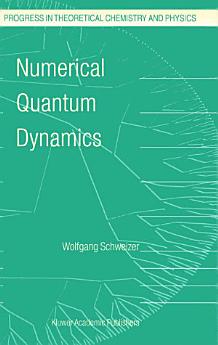Numerical Quantum Dynamics
W. Schweizer
2005년 12월 · Progress in Theoretical Chemistry and Physics 9권 · Springer Science & Business Media
eBook
267
페이지
report검증되지 않은 평점과 리뷰입니다. 자세히 알아보기
eBook 정보
It is an indisputable fact that computational physics form part of the essential landscape of physical science and physical education. When writing such a book, one is faced with numerous decisions, e. g. : Which topics should be included? What should be assumed about the readers’ prior knowledge? How should balance be achieved between numerical theory and physical application? This book is not elementary. The reader should have a background in qu- tum physics and computing. On the other way the topics discussed are not addressed to the specialist. This work bridges hopefully the gap between - vanced students, graduates and researchers looking for computational ideas beyond their fence and the specialist working on a special topic. Many imp- tant topics and applications are not considered in this book. The selection is of course a personal one and by no way exhaustive and the material presented obviously reflects my own interest. What is Computational Physics? During the past two decades computational physics became the third fun- mental physical discipline. Like the ‘traditional partners’ experimental physics and theoretical physics, computational physics is not restricted to a special area, e. g. , atomic physics or solid state physics. Computational physics is a meth- ical ansatz useful in all subareas and not necessarily restricted to physics. Of course this methods are related to computational aspects, which means nume- cal and algebraic methods, but also the interpretation and visualization of huge amounts of data.
이 eBook 평가
의견을 알려주세요.
읽기 정보
스마트폰 및 태블릿
노트북 및 컴퓨터
컴퓨터의 웹브라우저를 사용하여 Google Play에서 구매한 오디오북을 들을 수 있습니다.
eReader 및 기타 기기
Kobo eReader 등의 eBook 리더기에서 읽으려면 파일을 다운로드하여 기기로 전송해야 합니다. 지원되는 eBook 리더기로 파일을 전송하려면 고객센터에서 자세한 안내를 따르세요.







